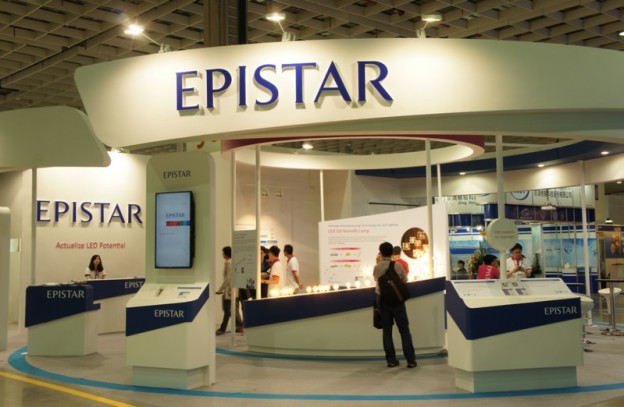Taiwanese LED chipmaker Epistar reported a decline in revenue in October due to the slow season and estimated 4Q17 sales less than that of 3Q17. However, Epistar’s outlook for 2018 is positive with the momentum from collaboration with display makers on Mini LED-lit displays.
 |
|
(Image: LEDinside) |
The company expects to launch new generation Mini LED-lit LCD displays in 1H18 and ramp up the wafer production for VCSEL to join supply chains of U.S. smartphone brands.
Epistar started producing VCSEL wafers with existing equipment two years ago, currently providing them to customers that manufacture VCSEL for visible light communication (VLC). It is rumored to be certified by Lumentum and earn orders from IQE, which adds more possibilities for it to enter the 3D sensing supply chain for U.S. smartphone brands.
Epistar uses a few 4-inch MOCVD machines to produce VCSEL wafers and is estimated to introduce 7-15 more 6-inch MOCVD machines to the production. Presumably, an MOCVD machine produces 400-500 wafers per month and each wafer is priced USD 2,000 or above. Its gross margin is far better than the average. VCSEL should be able to create an EPS of NTD 1 in 2018 if the production yield, quality control, and the number of orders earned match the expectations.
As for existing LED products, Epistar appeared to be reserved about the dynamic of LED chip price for 2018 considering that the competition with China gets intense as its chip capacity keeps scaling up. It projects the price of blue LED chip in 2018 to slump by 10%. Epistar will develop new applications such as Mini LED, Micro LED, and VCSEL, adjust its product mix, and improve the cost structure in response.
Challenges in the mass transfer process have put a heavy drag on the mass production of Micro LED, while Mini LED is rather likely to hit the market in 1H18 through a close collaboration between Epistar and display makers AUO and Innolux.
Ultra fine-pitch LED display is another segment where Mini LED can shine, said Epistar. As of now, the company supplies 300KK sets of RGB LED for displays per month, less than 3% of the global supply. Epistar is expected to raise its capacity in this market.












